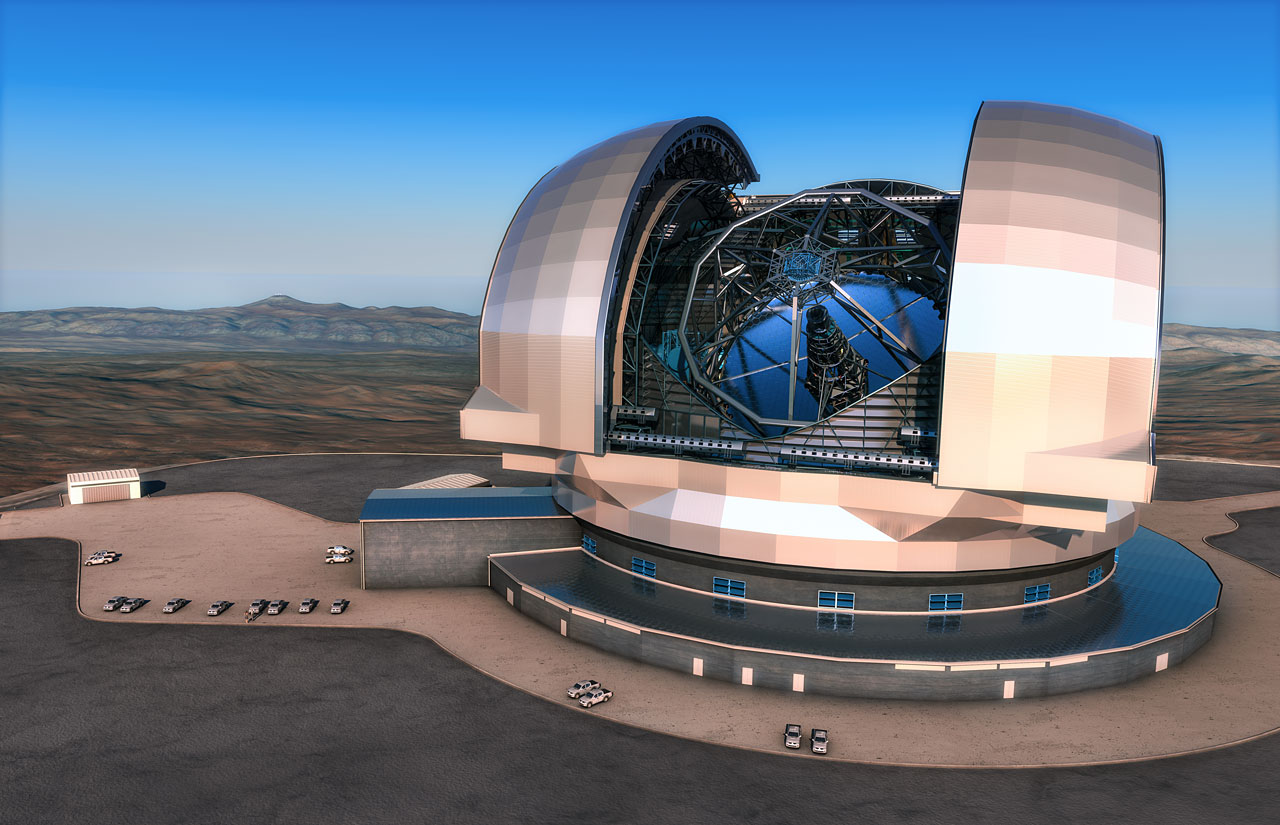Follow us on Google News (click on ☆)
With a primary mirror measuring 39 meters (128 feet), the ELT will surpass all existing ground-based telescopes. Its ability to gather light and produce images 16 times sharper than Hubble will open new perspectives. A recent study on arXiv suggests its first discoveries could come as early as its commissioning in 2028.


Views of the ELT.
Images ESO.
The ELT will analyze exoplanet atmospheres with unprecedented precision. Unlike the James Webb Space Telescope, it will be able to study planets that do not transit in front of their star. This capability relies on analyzing starlight reflected by these distant worlds.
Simulations show the ELT could identify biosignatures in just a few hours of observation. For Proxima Centauri, detecting life similar to Earth's would take only 10 hours. Neptune-sized planets would be even easier to study.
The study tested several scenarios, including sterile and inhabited Earth-like planets. The ELT should clearly distinguish between these cases, avoiding false positives. This precision is crucial in the search for extraterrestrial life.
Red dwarfs, the preferred targets, host numerous exoplanets. The ELT could discover atmospheres rich in water or oxygen there. These elements might indicate the presence of life, even in primitive forms.
The ELT's commissioning will mark a turning point in astronomy. Its observations could answer one of humanity's greatest questions: Are we alone in the Universe?
How will the ELT detect exoplanet atmospheres?
The ELT will use spectroscopy to analyze light passing through or reflected by exoplanet atmospheres. This method identifies molecules present thanks to their unique spectral signatures.
Transit spectroscopy studies starlight filtered by an exoplanet's atmosphere as it passes in front of its star. The ELT will enhance this technique with unprecedented sensitivity.
For non-transiting planets, the ELT will capture reflected starlight. This more complex approach requires high resolution and sensitivity to distinguish the planet's faint light from its star's.
These combined methods will characterize a wide variety of exoplanets, including potentially habitable ones.
What is a biosignature and how will the ELT search for it?
A biosignature is a chemical or physical indicator suggesting the presence of life. On Earth, oxygen and methane are examples of biosignatures produced by living organisms.
The ELT will search for unlikely gas combinations without life, such as coexisting oxygen and methane. These mixtures are unstable and require a constant source, like photosynthesis, to persist.
Studying atmospheres of Earth-like exoplanets at different epochs will help understand biosignature evolution. The ELT will thus distinguish between inhabited and uninhabited worlds.
This search is challenging because some geological processes can mimic biosignatures. The ELT, with its high resolution, will reduce the risk of confusion.